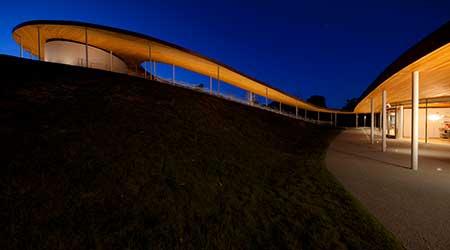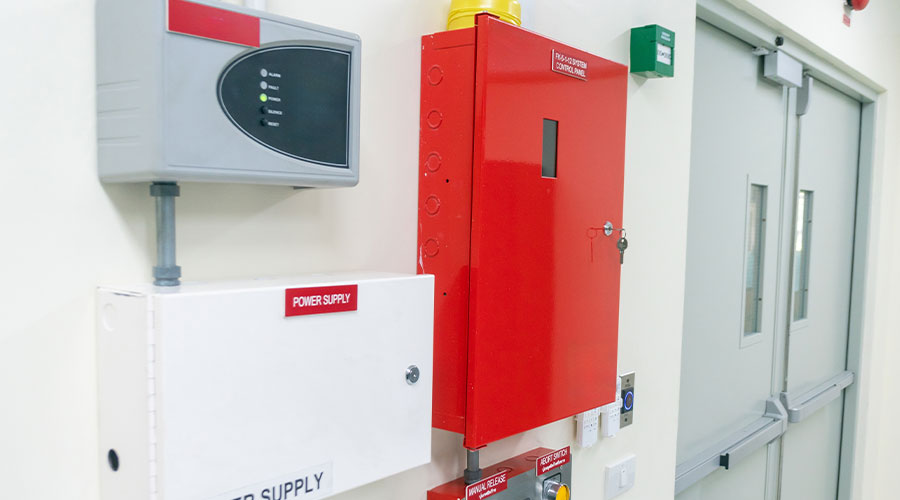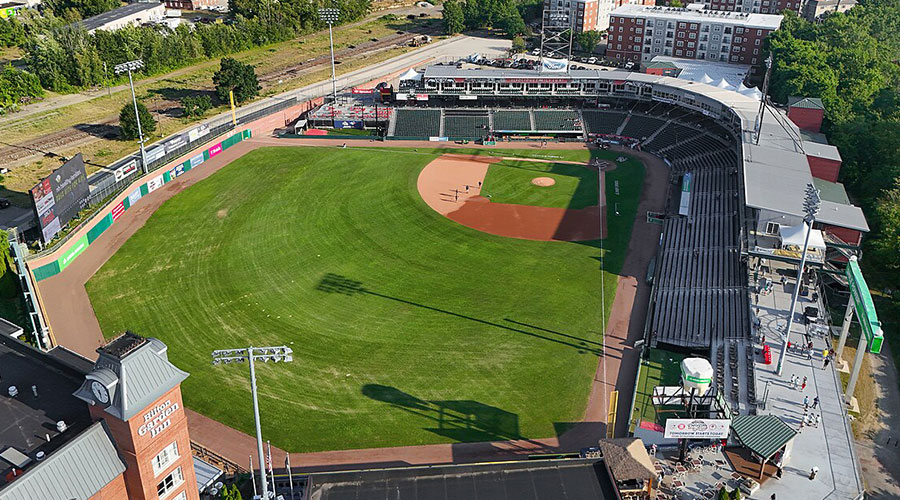 The lighting throughout the building interiors and exteriors at Grace Farms in New Canaan, Conn., works in partnership with the setting sun. As the trees across the valley are warmly lit at sunset, the building lighting ramps up, activating the wood ceilings and transitioning that radiance to the building’s surfaces. Gabe Guilliams
The lighting throughout the building interiors and exteriors at Grace Farms in New Canaan, Conn., works in partnership with the setting sun. As the trees across the valley are warmly lit at sunset, the building lighting ramps up, activating the wood ceilings and transitioning that radiance to the building’s surfaces. Gabe Guilliams4 Benefits of LED Lighting Beyond Energy Efficiency
First of a four-part article looking at how FMs can justify an LED upgrade.
Though energy efficiency is the most cited benefit, LEDs have several benefits beyond just energy efficiency. Indeed, we’ve come a long way since Edison’s first commercially produced light bulb, back in 1880, using a carbonized bamboo filament. Its most apt replacement, the LED (light emitting diode), is six to seven times more energy efficient and cuts energy use by up to 80 percent. But beyond the energy savings, there are even greater benefits to LED use as technology advances.
LED lighting provides a more versatile range of options to facility managers. Advances in controls have also enabled greater manipulation of artificial lighting sources than previously possible, creating different types of interactions far beyond an on/off switch. As just one example, LEDs now offer manual adjustment of color temperature from cool white to warm white.
There is also ongoing research on the effects of lighting on human health and behavior, particularly focused on blue light emissions which suppress melatonin production.
LED technology opens a new palette of possibilities for facility managers beyond what was possible with legacy lighting.
1. LED tape and linear profiles. The use of LED tape and linear profiles, with printed circuit board (PCB) embedded LED chips, have provided flexibility with greater options of lengths and optics, which would be not have previously been feasible in design, or achievable within given budgets.
As an example, previous methods of cove lighting for spaces and tasks governed by energy codes entailed the use of fluorescent strips which left pronounced socket shadows, and were only available in a small selection of standard lengths (2-, 3-, 4-, 5- and 8-feet). This greatly hampered their use without significant manipulation. LED tape or linear profiles now commonly offer very small increments, as short as two inches, which easily suit odd cove lengths and also reduce physical space requirements.
Linear LED profiles with optical lenses provide greater control of light distribution for wall grazing and wall washing effects. Because the LED source is so small, optics can effectively control beam angles while still maintaining small luminaire sizes. With an optical lens, the beam and distribution of light emitted can be commonly controlled to as tight as a 6-degree beam for “grazing light” onto vertical surfaces with textures and relief, such as stone and concrete walls, up to 50 to 75 feet. An asymmetrical optic can distribute illumination evenly onto vertical surfaces, ideal for “wall wash” application of advertising surfaces, teaching surfaces, or other wall surfaces where uniform perimeter brightness might be desired.
2. Smart lighting. As inherently digital devices, LEDs can work with controls and other systems to create unique solutions.
For example, one museum is exploring the use of Bluetooth-enabled LED spotlights. While the project is still under development, the track mounted spotlight with motion sensor and lux sensor could provide an intelligent lighting solution that could aid the preservation of artwork. The motion sensor could reduce the amount of light the artwork is exposed to in the gallery when it is unoccupied while the lux sensor could set the maximum limit of illumination the work would be exposed to at any one time. An onboard chip would be able to provide useful feedback on the module intensity, power, LED temperature, PCB temperature, and input voltage characteristics.
Lighting technology is a constantly advancing science. These technologies can be implemented to provide energy savings and integration with building management systems that allow one sensor to control both lighting and mechanical systems.
Related Topics:















